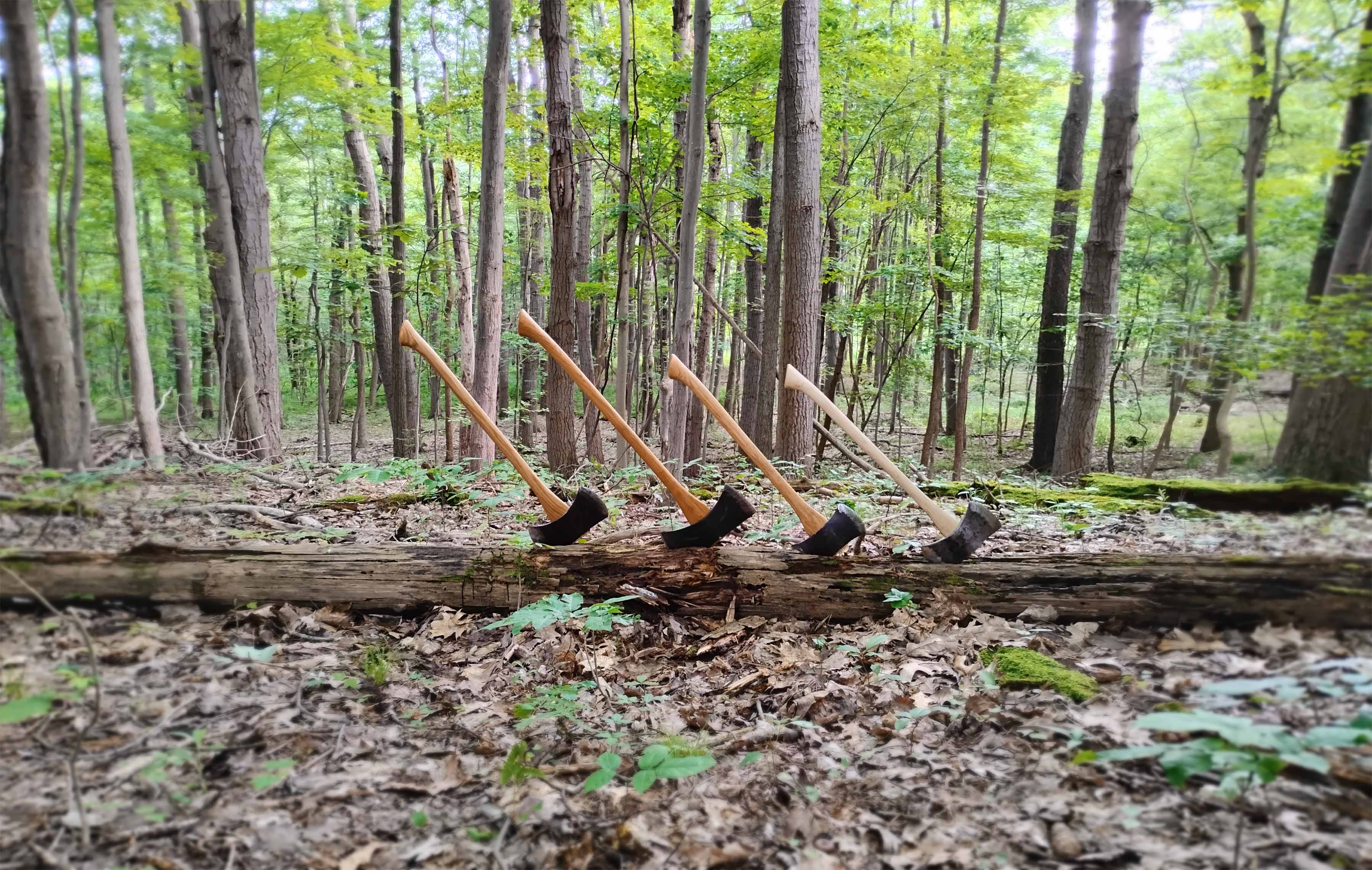
Exceptional Axe Handles
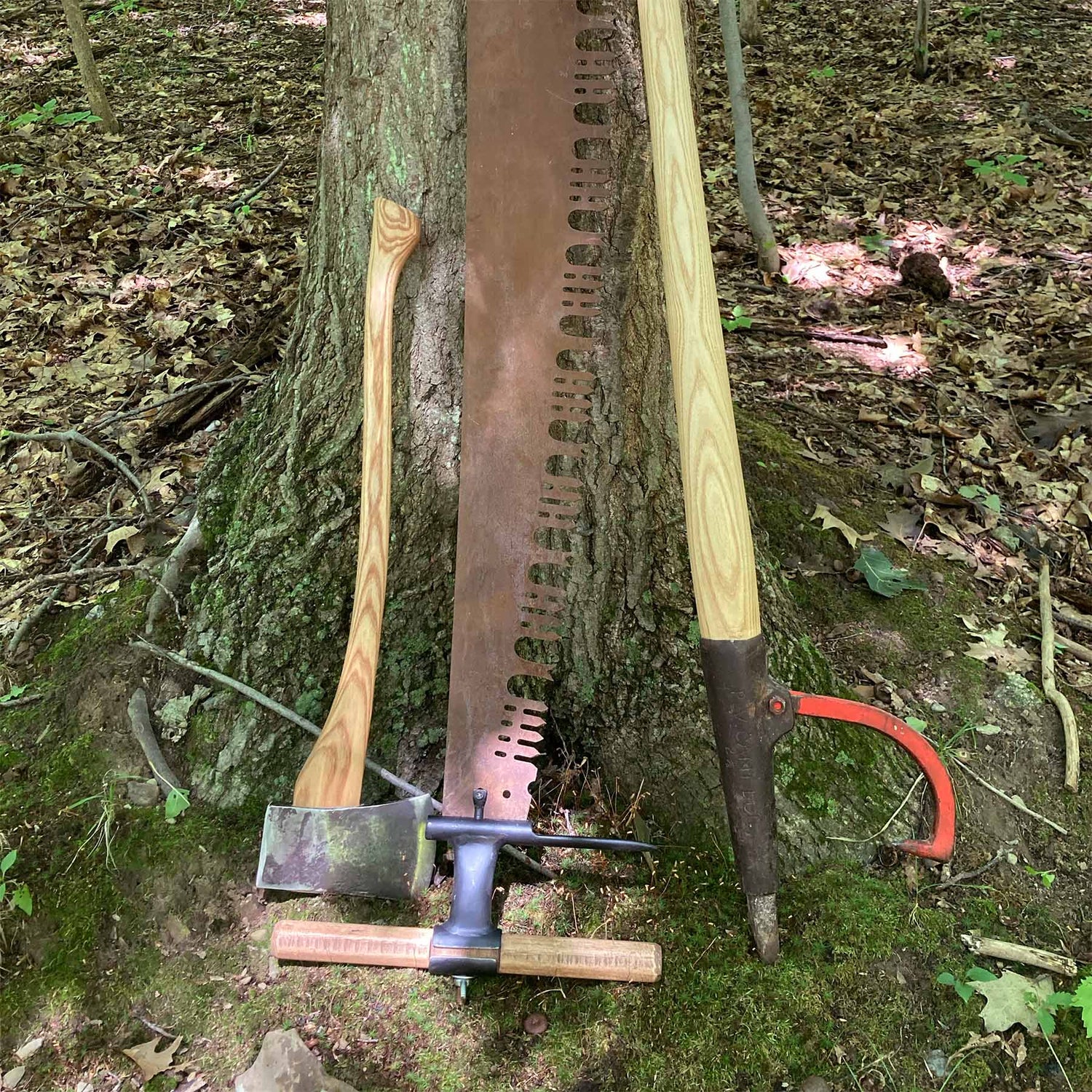
The T. D. Handle Story
When choppers worked in the winter woods from sunup to sunset, they appreciated quality handles. They were made in many styles, lengths and grades. By the mid 1930’s, 90 plants in 19 states were producing handles. As axes and crosscut saws were replaced by chainsaws and the demand for handles dwindled, many regional handle styles became unavailable.
Pictured: Tools of the New England "chopper" (with apologies for the West Coast saw handles)
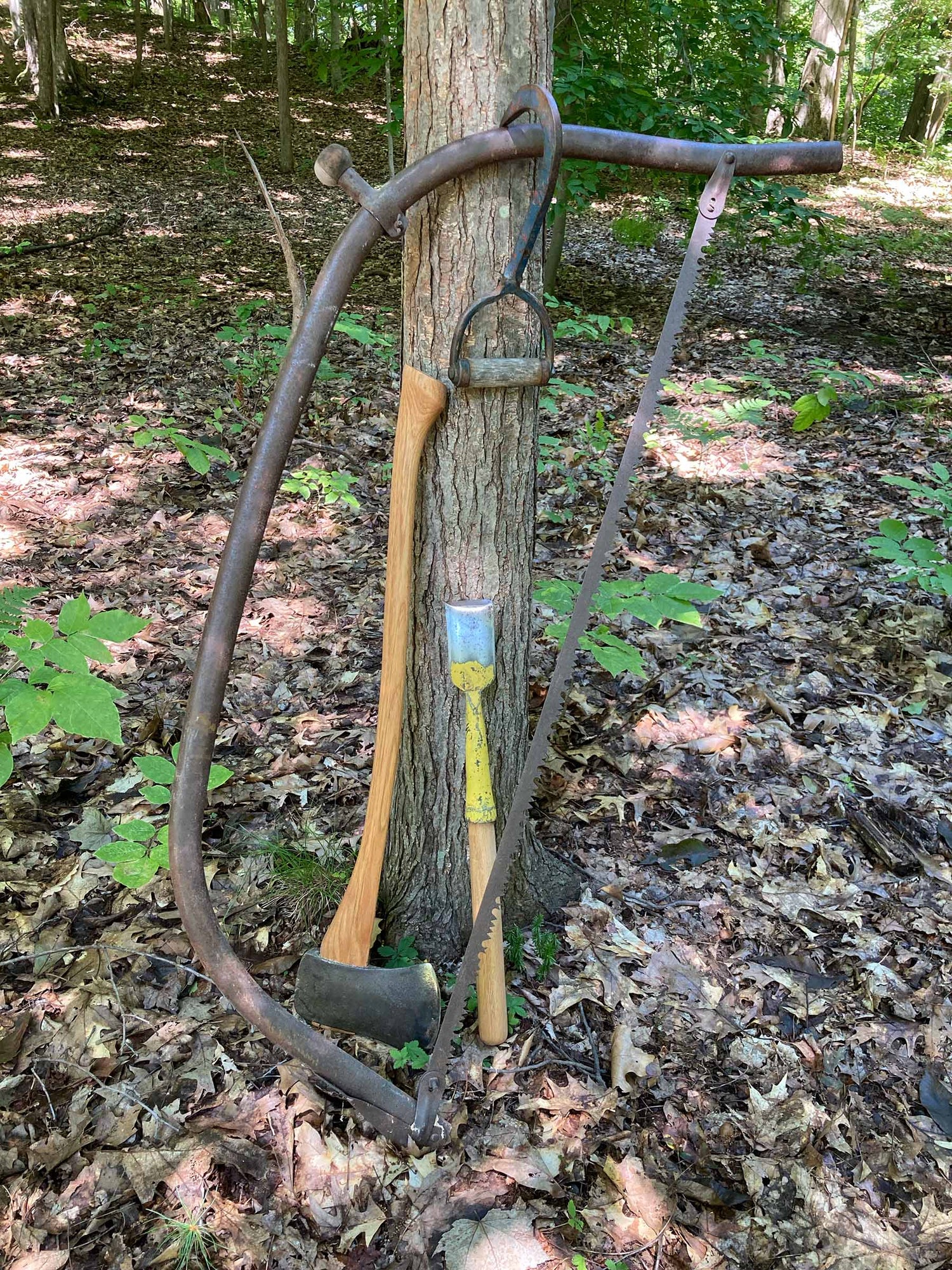
Finding acceptable handles became increasingly difficult. This is what prompted us to start making handles. Our mission is to be a dependable supplier of exceptional axe handles at a fair price. We are not resellers. Other than sawing blanks, everything happens in our home shop.
Pictured: Tools of the pulp cutter. Men would commonly paint pulp hooks and spuds to keep from losing them in the woods.
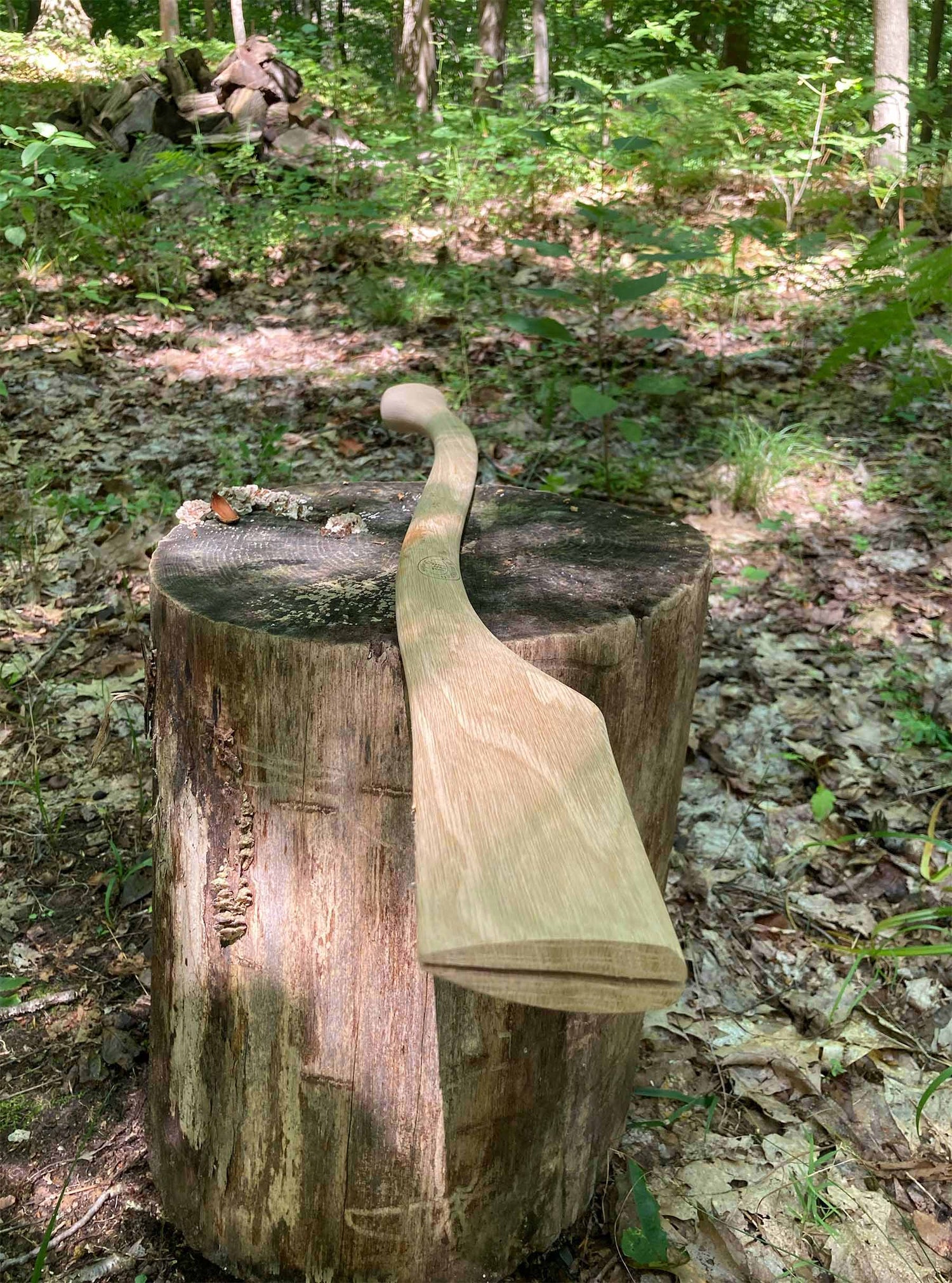
The idea for the T. D. Handle Company was hatched in 2018. Since then, we have been working on perfecting equipment, tooling, process, and patterns. Guided by a passion to make outstanding handles, we considered the recurrent complaints that frustrate buyers and addressed them one by one.
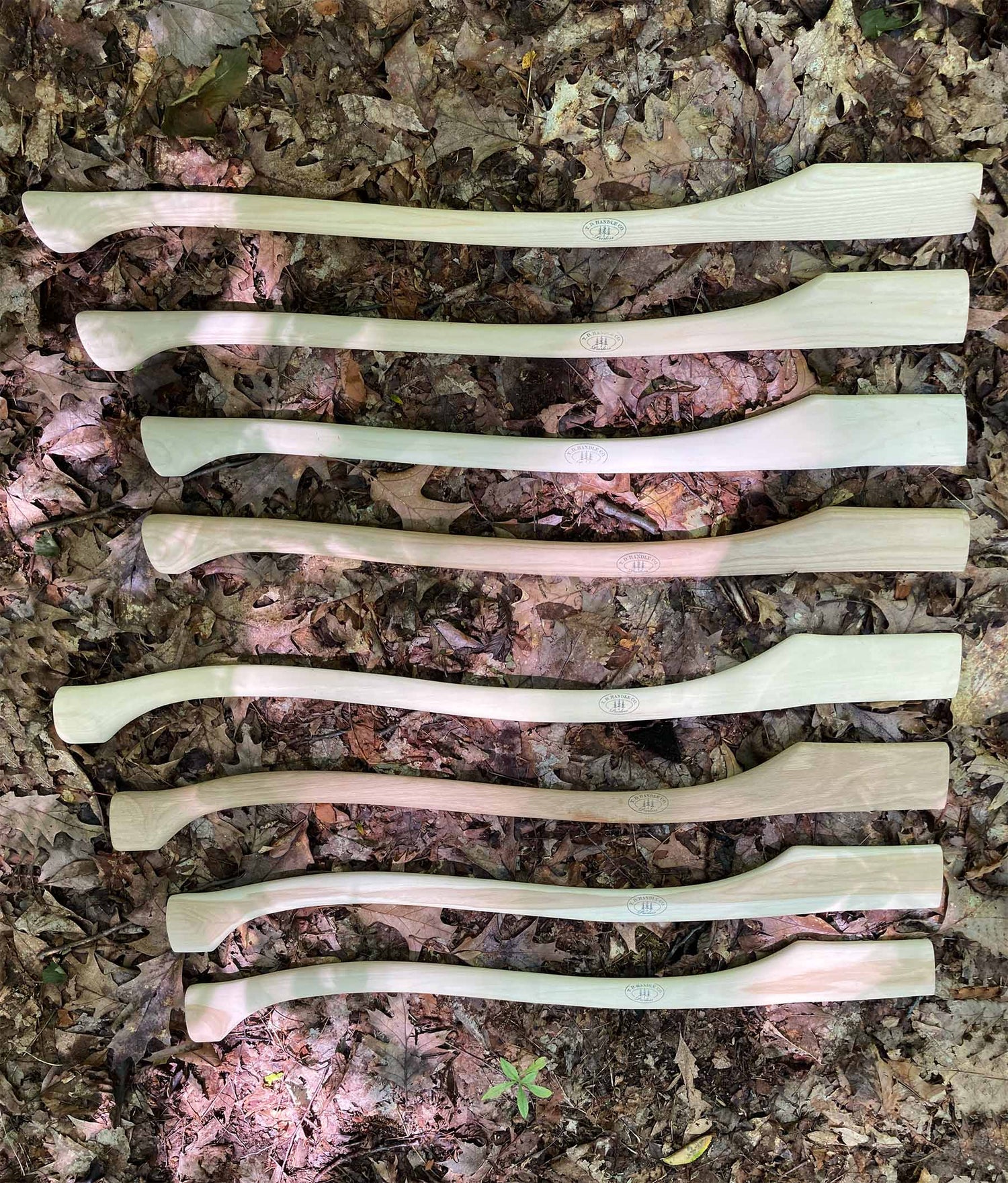
A large share of our time before opening was spent refining our traditional patterns. Each one represents what we believe to be the best attributes of its kind. We are currently offering handles made from 25 of our 36 patterns, many in both oval and octagon. Most of our handles are representative of the northeastern US where we are located. If business allows, we will add more of these to our available handle line. Hopefully, with your support, they will all make it to market!
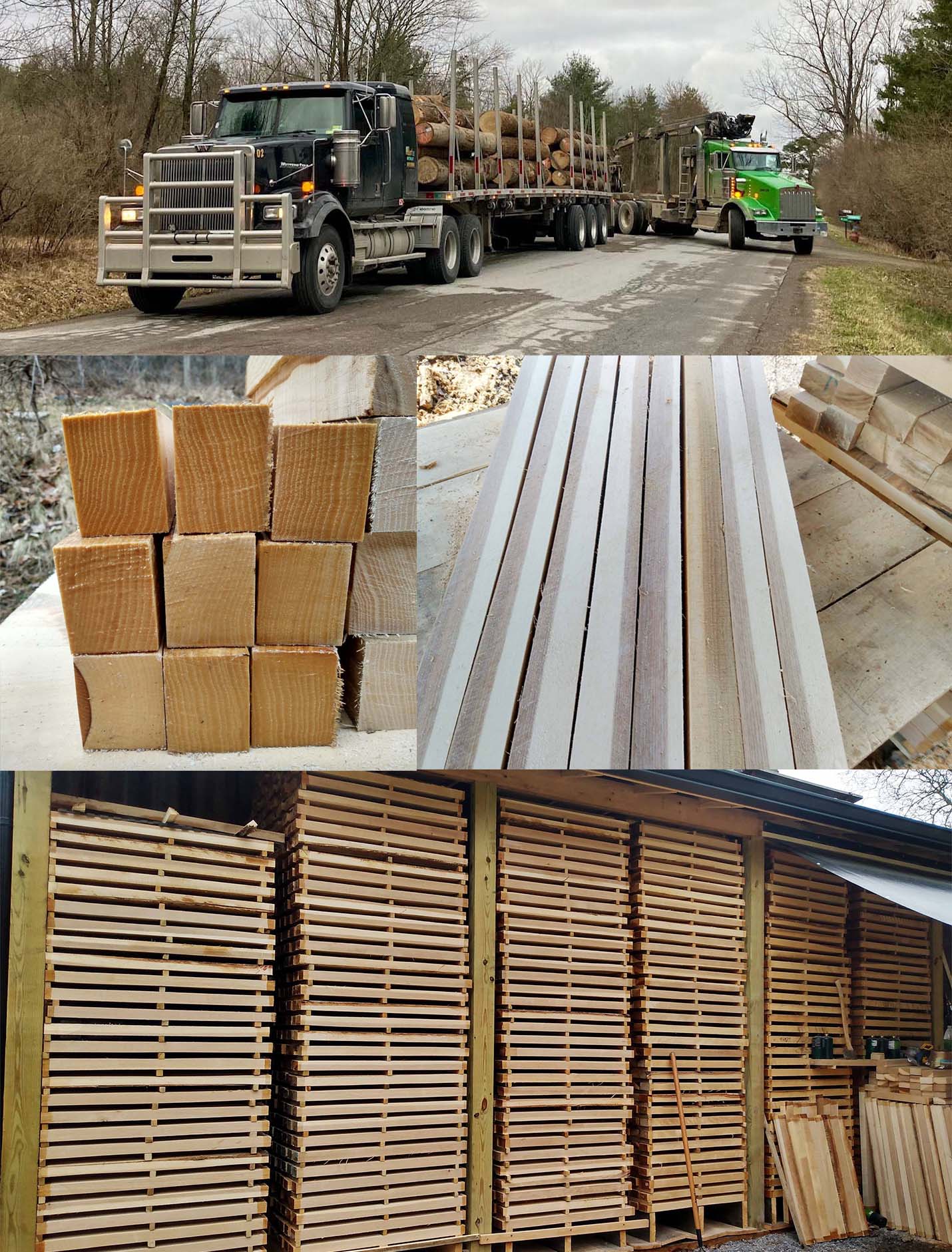
We sell handles with minimal runout and excellent grain orientation. A very tedious sawing process makes this possible. Given proper grain orientation and minimal grain runout, in our experience, few handles fail from other than abuse. Traditionally, axe handles were made with the most suitable species of the regionally available choices. In different areas of Europe, ash, beech, oak, birch and hornbeam best filled that box. In Australia, spotted gum, in Canada, ash, and in different parts of the US, hickory, ash, white oak, maple, yellow birch, elm, hornbeam, osage orange and surely many others were used. With the development of the rail system and reliable interstate commerce hickory quickly became king. Our principal handle woods are hickory and white ash. We offer a few patterns in yellow birch and white oak. For a deeper dive into wood properties check out Mechanical Properties of Wood. The most significant property for handles is the impact bending listed on page 4, described on page 3.
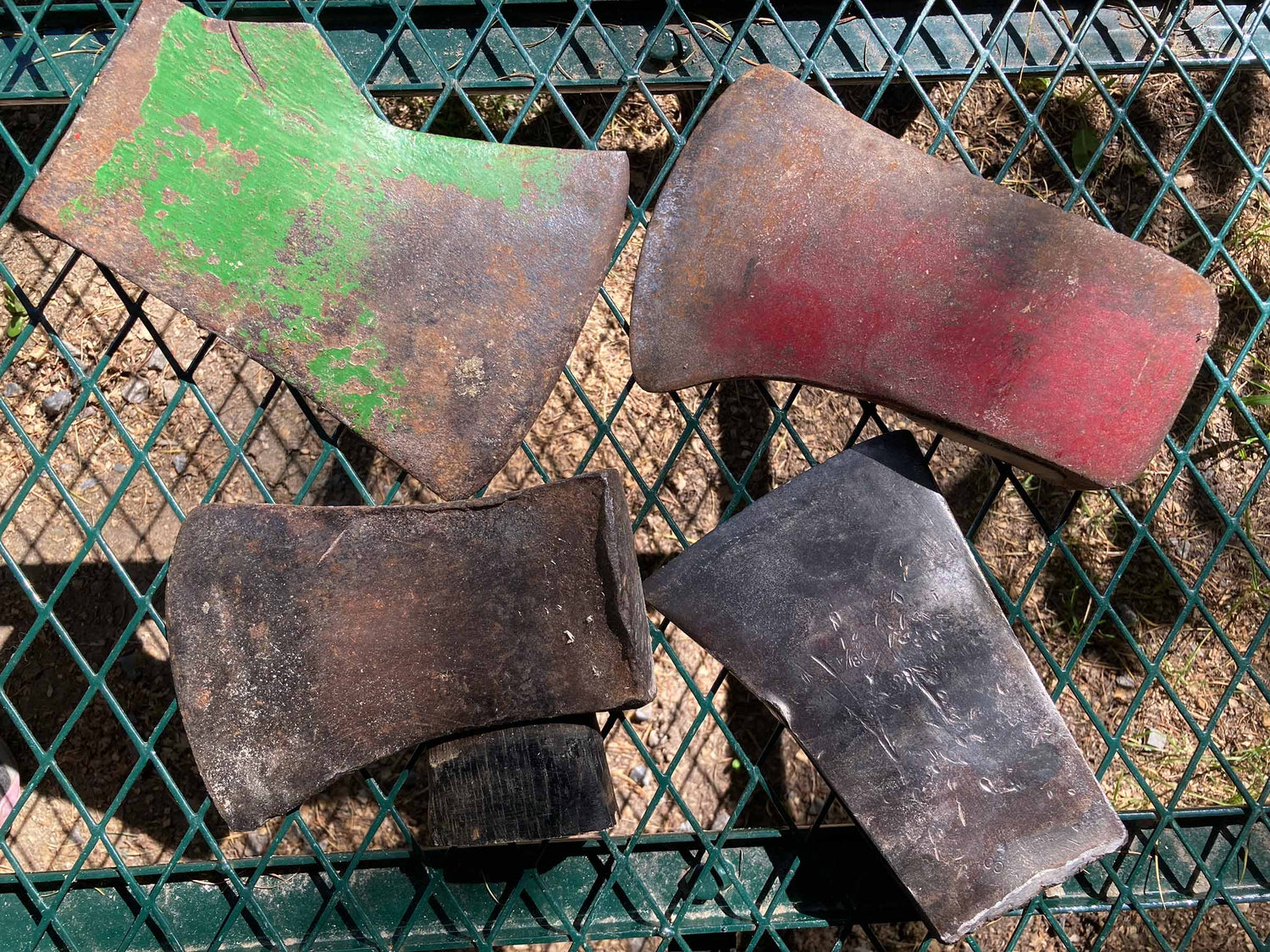
At the time settlement of North America was taking place, settlers showed up with axes that worked reasonably well for cutting the small timber of their denuded forests but were no match for the trees of the “new world”. The need for better suited axes led to the myriad of unique patterns developed in North America. Brief History of the Axe . There are many of those old heads out there with a story to tell waiting for a little love and a new handle and to be put back in service: A current search of Ebay for “Axe heads” yields 9000+ results!
News
-

Brant & Cochran Use T.D. Handles for Special Al...
Brant & Cochran, makers of heirloom quality axes in Maine, have released a special run of their award-winning Allagash Cruiser axe heads hung on T.D. Handle's 28" yellow birch Vermont...
Brant & Cochran Use T.D. Handles for Special Al...
Brant & Cochran, makers of heirloom quality axes in Maine, have released a special run of their award-winning Allagash Cruiser axe heads hung on T.D. Handle's 28" yellow birch Vermont...
Collections
-

Adirondack Double Bit axe handles
This handle style was most likely conceived by a clever chopper in...
-

Fallers axe handles
Similar to the Lumberman’s pattern, our Fallers pattern handles have a sturdier...
-

Vermont / New Hampshire Pattern axe handles
I spent some time as a “chopper” in New Hampshire in my...




